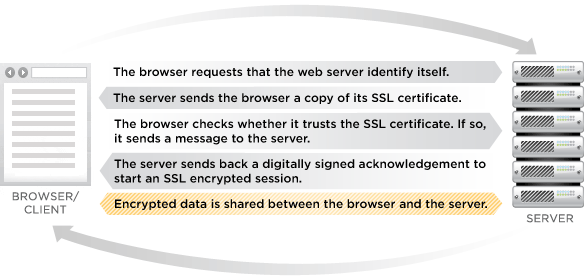 Processing, please wait...
Processing, please wait...
 Processing, please wait...
Processing, please wait...

 Processing, please wait...
Processing, please wait...

Web servers and Web browsers rely on the Secure Sockets Layer (SSL) protocol to create a uniquely encrypted channel for private communications over the public Internet. Each SSL Certificate consists of a public key and a private key. The public key is used to encrypt information and the private key is used to decipher it. When a Web browser points to a secured domain, a level of encryption is established based on the type of SSL Certificate as well as the client Web browser, operating system and host server’s capabilities. That is why SSL Certificates feature a range of encryption levels such as "up to 256-bit".
Strong encryption, at 128 bits, can calculate 288 times as many combinations as 40-bit encryption. That's over a trillion times a trillion times stronger. At current computing speeds, a hacker with the time, tools, and motivation to attack using brute force would require a trillion years to break into a session protected by an SGC-enabled certificate.